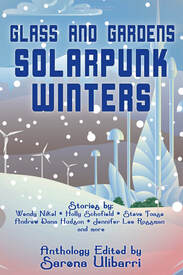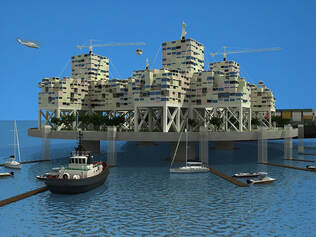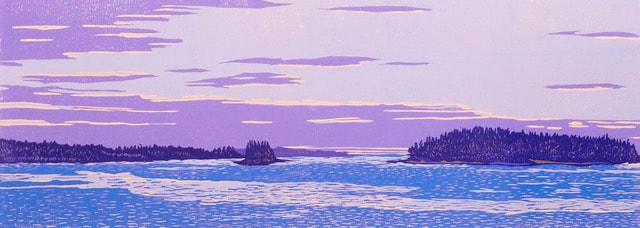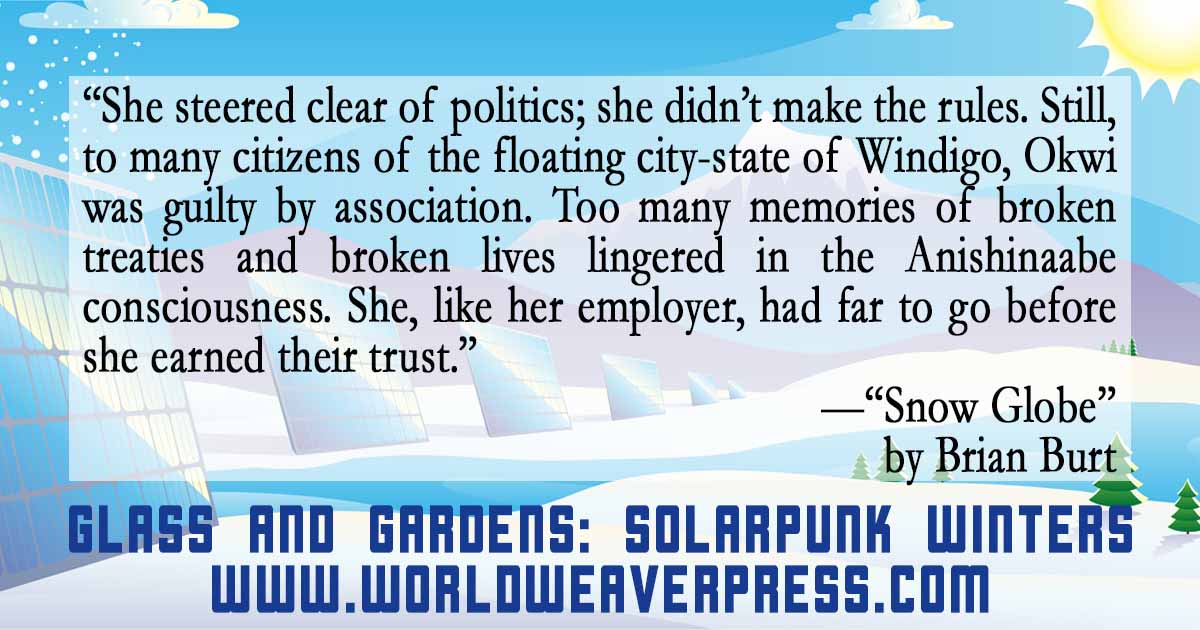 Guest Blog by Brian Burt Solarpunk has always resonated with me. I love optimistic visions of a future where technology meshes with the natural world, transforming enemies into allies. An article about seasteading made me wonder: if people can build environmentally friendly floating cities in the ocean, why not on the vast expanse of the Great Lakes that border my home state of Michigan? A recent family trip to Isle Royale — probably the most remote U.S. national park, a rugged chunk of wilderness in the middle of Lake Superior — provided the final bit of inspiration. To naturalists, Isle Royale is famous for its Winter Study of moose and wolf populations isolated on a 200-square-mile island far from human civilization. What better place for the Native American characters in my short story "Snow Globe" to launch their archipelago of lakesteads, dynamic floating laboratories where they can experiment with new kinds of society and culture? Lake Superior herself became a character as well: cold and deep and lovely, her calm surface capable of exploding with the fury of winter storms. (My family can assure you, after our stomach-churning ferry ride back from Isle Royale to the Michigan mainland, that you wouldn't like her when she's angry.)  The seasteading (or lakesteading, in the case of "Snow Globe") movement seeks to chart a new course for human social evolution. People come together to form sovereign, floating city-states with their own unique spin on how to govern themselves. They create sustainable systems that allow them to be self-sufficient, balancing what they create with what they consume, ensuring that they don't degrade the precious resources that empower their freedom. And they can change their minds. If they don't like their neighborhood, they can detach their section and move to another part of the city. If they're really unhappy with the direction their community has taken, they can tow their homes to a different floating city altogether. Their world is like the vast body of water on which it floats: flowing, swirling, shifting, never stagnant. Isle Royale remains the one constant. It has withstood the steady pounding of Lake Superior for millennia, providing a refuge for endangered creatures and ancient legends alike. When my wife and son and I hiked the densely wooded trails along Rock Harbor, saw moose wading into the shallows and heard the haunting cries of loons, we felt blessed, touched by a magic rarely encountered in the modern world. How could any writer not draw inspiration from an experience like that! I loved exploring the fictional world inhabited by the characters of "Snow Globe." I hope you do, too. Just remember: on Isle Royale, or anywhere on Lake Superior, surprises await. Keep your eyes open and your life jackets strapped tight! Brian Burt is an award-winning writer of speculative fiction with environmental themes. His debut novel, "Aquarius Rising 1: In the Tears of God," won EPIC’s 2014 eBook Award for Science Fiction; the sequel, "Aquarius Rising 2: Blood Tide," won the Readers’ Favorite Gold Medal for Science Fiction in 2016. His story "Snow Globe" is in Glass and Gardens: Solarpunk Winters.
0 Comments
Your comment will be posted after it is approved.
Leave a Reply. |
World Weaver PressPublishing fantasy, paranormal, and science fiction. Archives
February 2024
|
- Home
-
Books
-
All Books
>
- Beyond the Glass Slipper
- Bite Somebody
- Bite Somebody Else
- Black Pearl Dreaming
- Cassandra Complex
- Causality Loop
- Clockwork, Curses, and Coal
- Continuum
- Corvidae
- Cursed: Wickedly Fun Stories
- Dream Eater
- Equus
- Fae
- Falling of the Moon
- Far Orbit
- Far Orbit Apogee
- Fractured Days
- Frozen Fairy Tales
- Glass and Gardens: Solarpunk Summers
- Glass and Gardens: Solarpunk Winters
- Grandmother Paradox
- Grimm, Grit, and Gasoline
- Haunted Housewives
- Heir to the Lamp
- He Sees You When He's Creepin': Tales of Krampus
- Into the Moonless Night
- Jack Jetstark's Intergalactic Freakshow
- King of Ash and Bones (ebook)
- Krampusnacht
- Last Dream of Her Mortal Soul
- Meddlers of Moonshine
- Mothers of Enchantment
- Mrs Claus
- Multispecies Cities
- Murder in the Generative Kitchen
- Recognize Fascism
- Scarecrow
- Sirens
- Shards of History
- Shattered Fates
- Skull and Pestle
- Solarpunk (Translation)
- Solarpunk Creatures
- Solomon's Bell
- SonofaWitch!
- Speculative Story Bites
- Trenchcoats, Towers, and Trolls
- Weredog Whisperer
- Wolves and Witches
- Anthologies and Collections
- Novels
- Novellas
- Fairy Tale
- Fantasy
- Romance
- Science Fiction
- Urban/Contemporary Fantasy
- Young Adult SFF
-
All Books
>
- Blog
- About
- Contact
- Press / Publicity
- Newsletter Signup
- Privacy Policy
- Store



 RSS Feed
RSS Feed